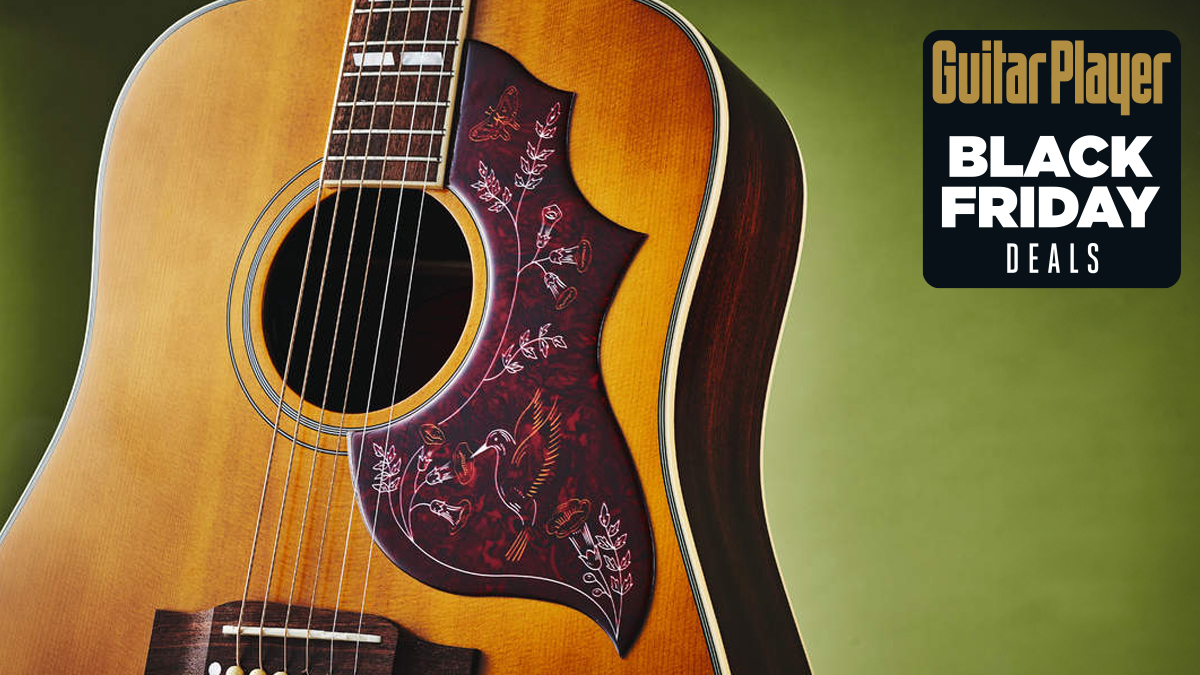"It was like a hunk of wood with two knobs on it. I found one for about $100 in a junk store.” The late Mick Ralphs on the influence of Leslie West and the glorious guitars that rocked Mott the Hoople and Bad Company
In our 1979 interview, the guitarist told us about his key axes — from his first "misfortune" to the Les Paul Standards that graced his collection in the 1970s
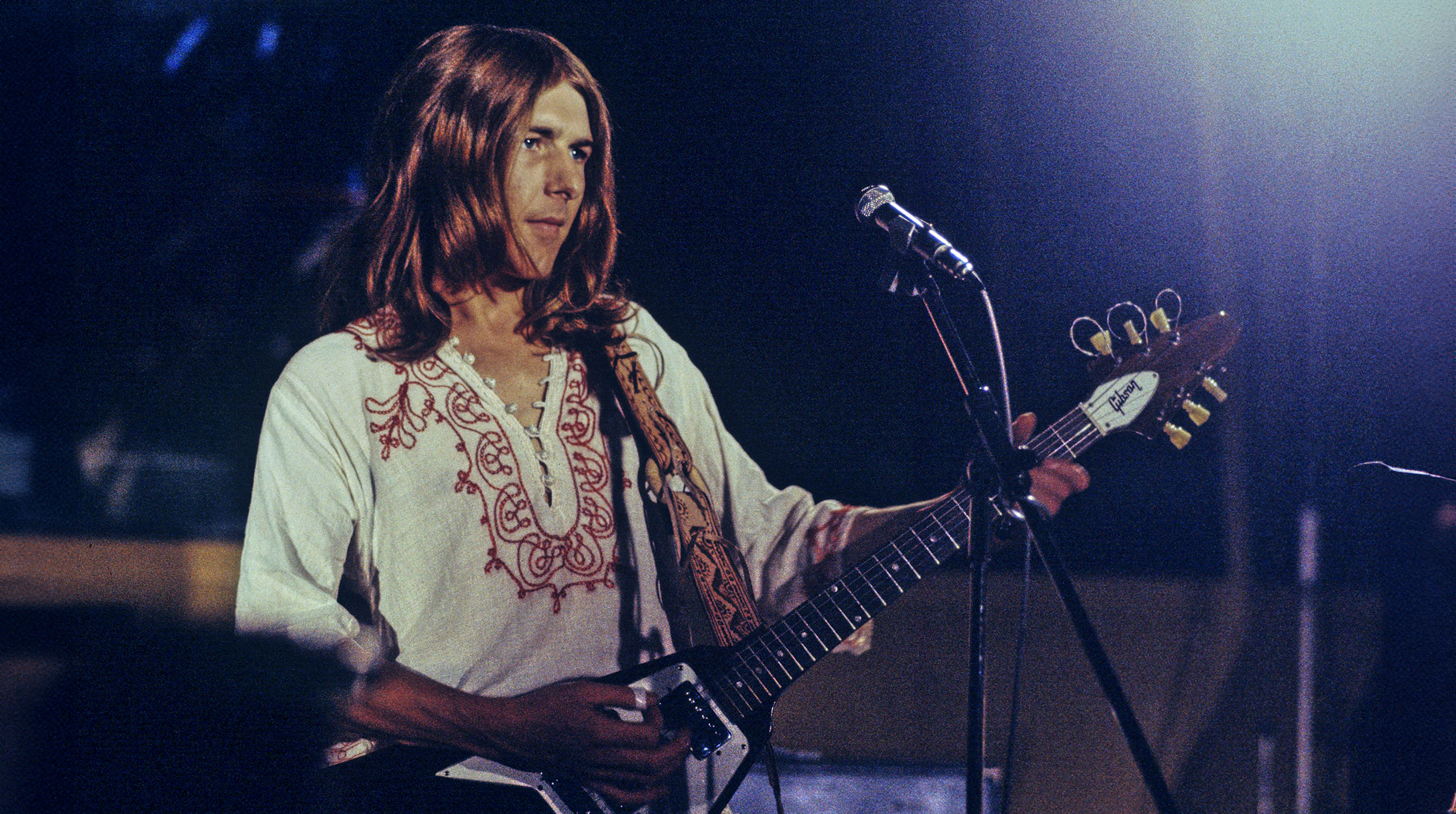
Over his long career, Mick Ralphs played a range of electric guitars, including models by Burns, Epiphone, Fender and Gibson. In his cover feature published in the September 1979 issue of Guitar Player, the guitarist — who died June 23 of complications from a 2016 stroke— took a deep dive through his history, taking us from his very first budget axe to the dream guitars he played in the 1970s with Bad Company.
He started out by telling us about his very first guitar, which — as most guitarists will appreciate — was far less than ideal. It was the same model Paul McCartney was playing when the Beatles landed in Hamburg in 1960. And, just like McCartney's instrument, Ralphs' wasn't built to last.
“I had the misfortune to own a Rosetti Lucky 7," he said. "Well, in fact it was quite nice because my auntie bought it for me. She was always generous to me because I came from a poor family. She would take me shopping, and she bought me this guitar which, at the time, seemed pretty fabulous, but really it was only like $30 or something.
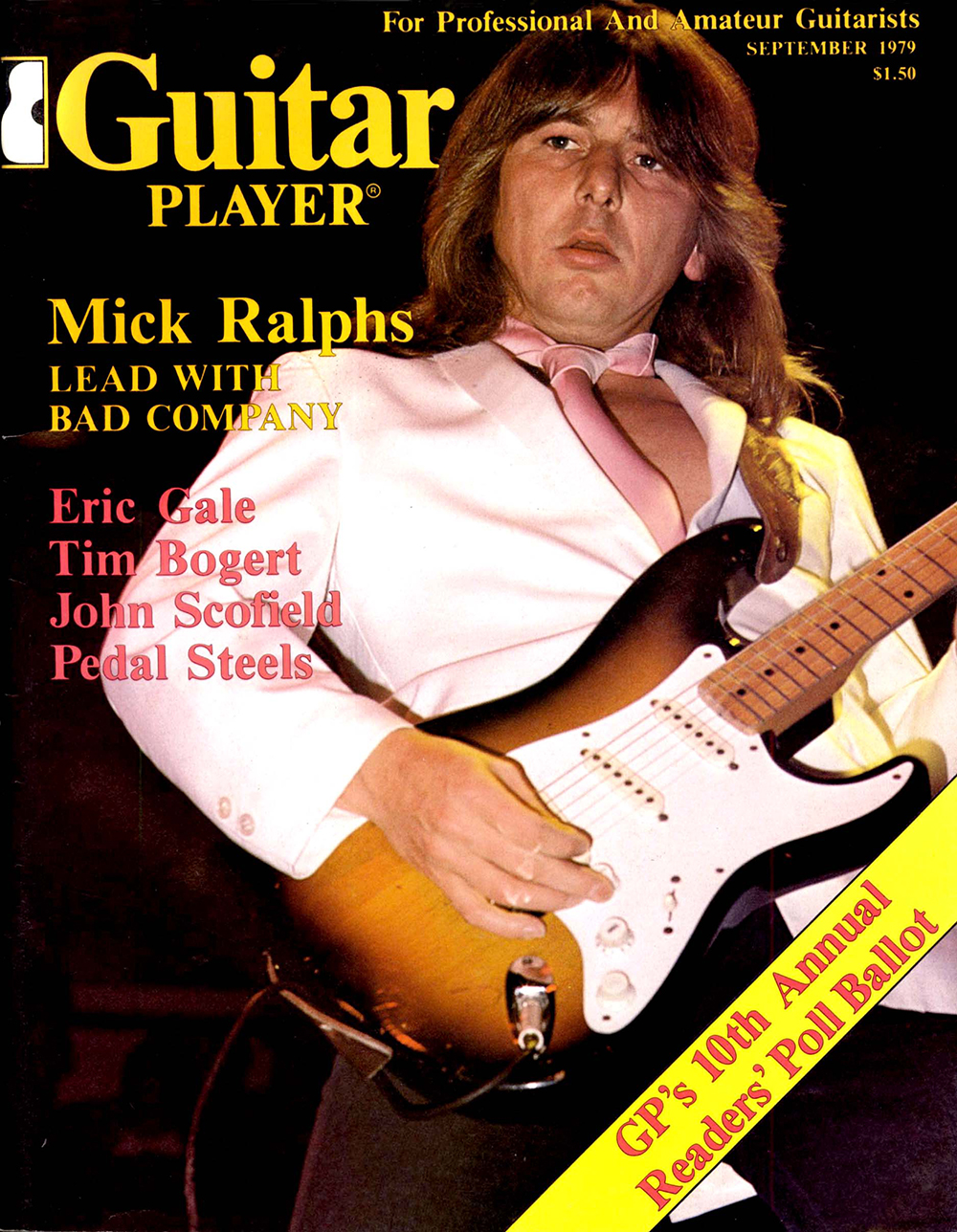
"It was a semi-acoustic, jazz-type guitar with one pickup on it. It wasn’t the best instrument to start with because it had action like a cheese grater. You know, you’d get up around about the middle of the fingerboard, and you’d have about two inches to go to touch the neck. But it got my fingers toughened up.
“As I started playing in local bands, guys would let me try different kinds of guitars. I ended up borrowing instruments because I could never afford one. I went from there to various cheap-type guitars, the equivalent of Silvertones and stuff like that, but not as good. You couldn’t get American guitars in England then.
"The only people who had anything good were the really, really big groups you saw on TV, and they had Fender Stratocasters. But these guitars were like gold dust: you never saw them in England.”
Ralphs had been working as an electrical engineer when he decided to make a go of things as a musician in the mid 1960s.
All the latest guitar news, interviews, lessons, reviews, deals and more, direct to your inbox!
“I guess I gave up working regularly as an electrical engineer in about 1966. So I would go over to Germany and do a month in a club, which was like a bar gig. You know, you’d play from like 7:00 at night until 3:00 in the morning. That went on until about 1968.
“By this time I’d begged, borrowed, and stealed my way to a Burns Tri-Sonic guitar that had a switch on it that said ‘Wild Dog Treble.’ It was really heavy in weight, but it was a good English guitar. Gibsons and Fenders were starting to creep into the country, but they were still pretty expensive. You couldn’t really afford them unless you wanted to mortgage your life away.”
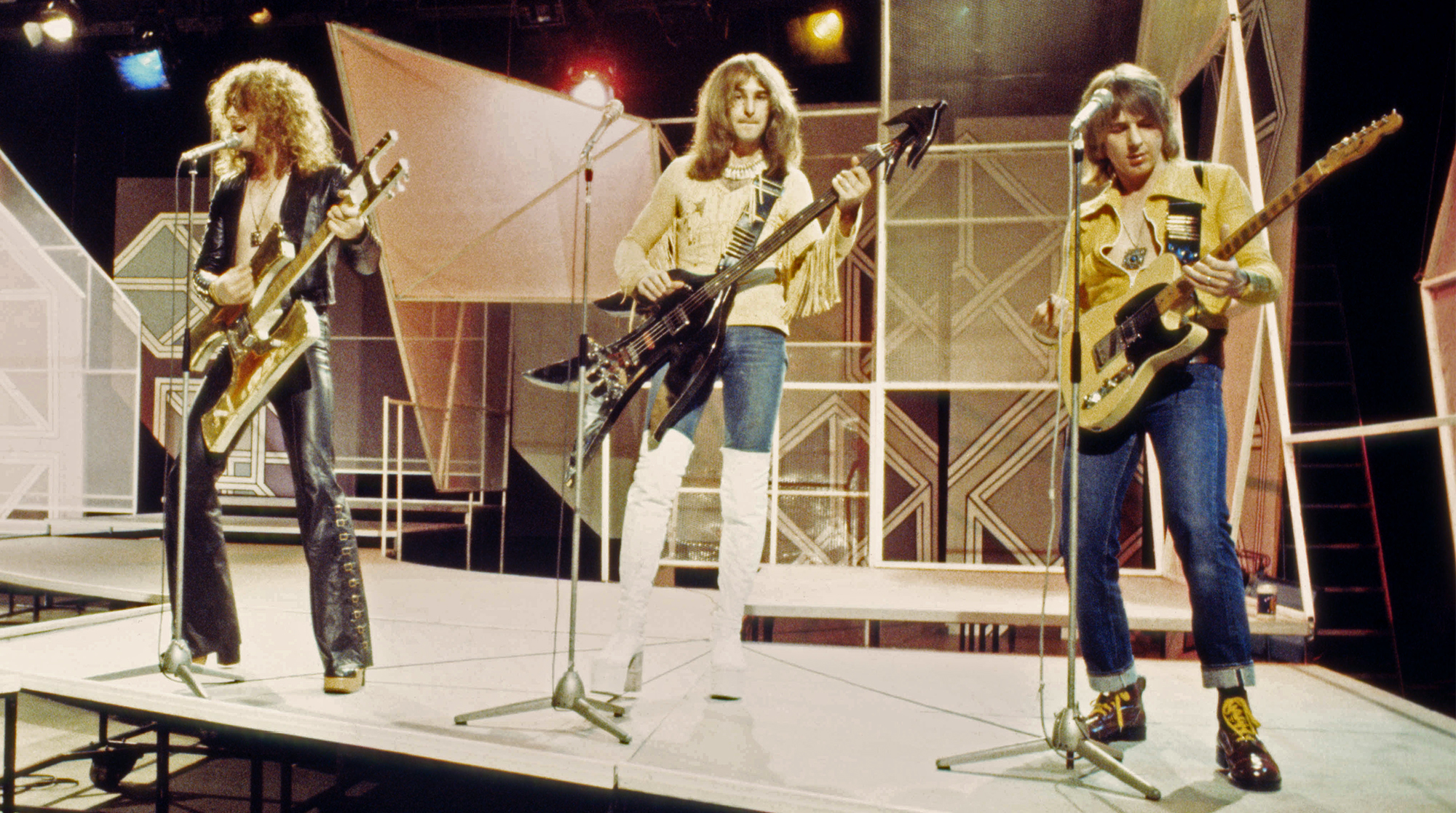
Of his early gear lineups, he says the best was “two AC30s and a Fender Telecaster. What I did was trade the Burns and some money for a Telecaster. It was just the regular, stock mid-’60s model, probably a ’66. It was second-hand. I ran it straight into the amps. I just used to roll some of the top off the bridge pickup, because otherwise if you got it all the way up, it would scream. I’d link one of the AC30s on top of the other, and I’d get a pretty good sound.
“I suppose what I was trying to do was get that sort of Eric Clapton sound, but there was no way I could afford a Les Paul. I stuck with that Tele for a long time, then I eventually traded it. In those days if you had a guitar and you wanted to get a better one, you had to get rid of the one you had.
“I was always thinking, Well, one day if I have enough money I won’t have to do this; I’ll be able to keep this one. After I sold a guitar and got something else, I’d say, ‘Aw shit, I wish I had kept that guitar.’ I ended up using Telecasters a lot — I really got into them.
“I liked the way they stayed in tune, the way their necks felt good, and the fact that they are real durable guitars. We did a lot of traveling and stuff was being moved around a lot, and the ones I had were very tough guitars that sounded good. In fact, I didn’t get my first Gibson until I joined Jimmy Cliff in ’69.”
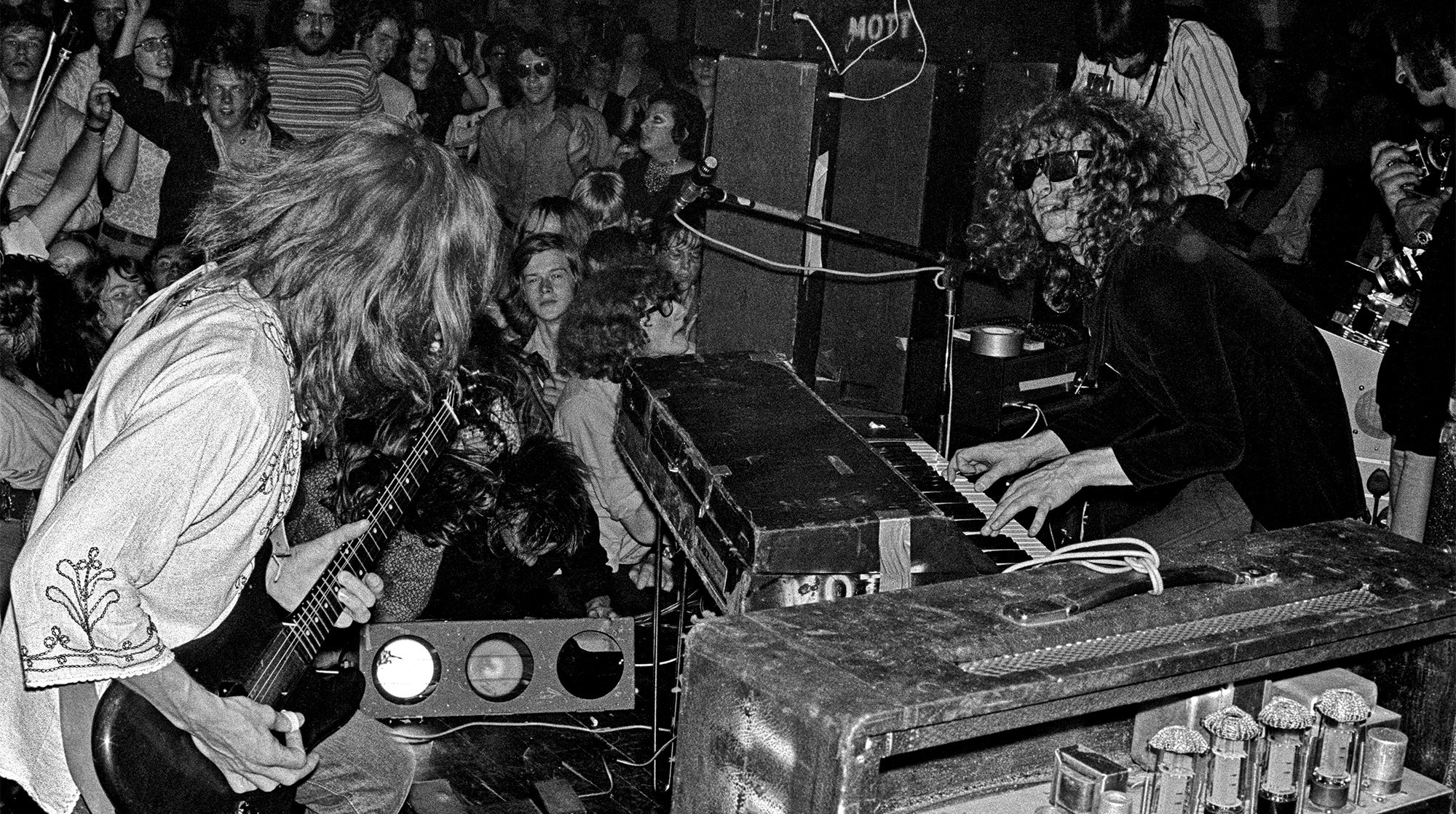
At the time, Jamaican singer Cliff was enjoying popularity with songs like “Waterfall,” “Wonderful World, Beautiful People” and “Many “Rivers to Cross,” mixing ska and the emerging sounds of reggae with soul music.
“People kept coming and going in that band, and often there was just me, a bass player and a drummer,” Ralphs said, “so I had to adopt a technique of, ‘Well, in case we don’t have anybody else, I can cover up.’ So I ended up playing a combination of rhythm and lead.
“By that time I had traded the Telecaster, an AC30, and some money for a cherry red, double-cutaway Les Paul Standard. It had one of those tremolo arms that folded back; I think it was a late ’61 model.
“Suddenly I had my hands on a Gibson with humbuckers on it! It didn’t sound the same as a single-cutaway Les Paul, but it sounded pretty good. I used to get a really fat sound out of it. It was thicker than the Fender, and it had a real good tone on the pickup near the neck — I could get that smooth type of tone that Clapton used to get with Cream.”
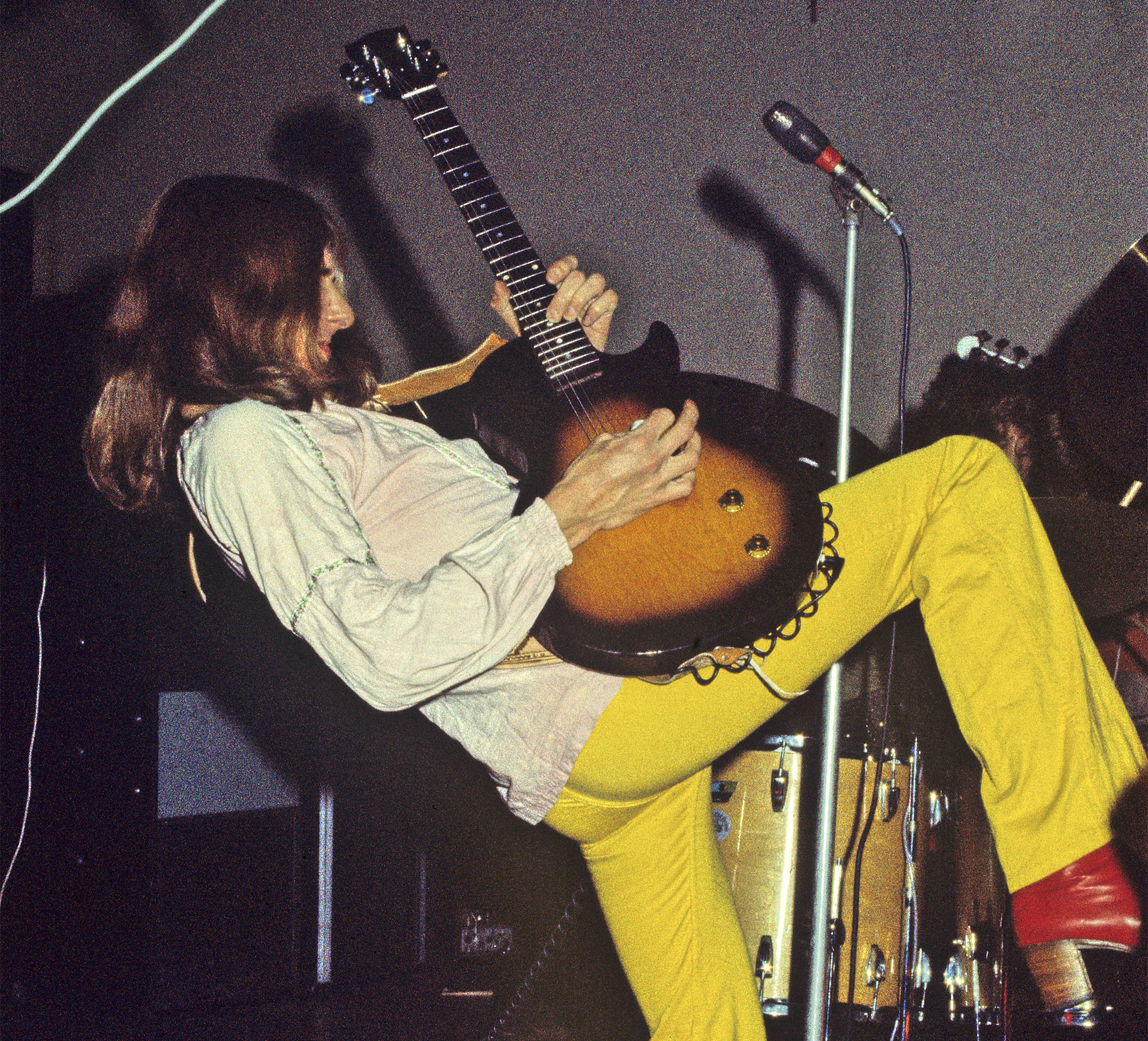
His gig with Cliff was followed by the birth of Mott. Signed to Island Records in the U.K., the group suddenly had an infusion of money, which their manager, Guy Stevens, was happy to spend.
“Guy Stevens said to me one day, ‘Would it make you play better if I got you any guitar you’ve ever wanted?’ I told him I’d sure like to know and that I’d always dreamed of owning a Les Paul. We went to a shop in London and traded my SG Les Paul and £100 for an old goldtop. It was about a ’54, with the white pickups. I used my SG Les Paul on Mott the Hoople, and on Mad Shadows I used the goldtop.
“Then we came to America. There was a whole new world! Suddenly there were guitars everywhere — all my dreams come true. There were Fenders and Gibsons hanging in every window. In England trying to find a Gibson or Fender was like looking for a gold coin on the street in L.A.: you felt very lucky to find one.
“We were touring with Mountain and Traffic, and I discovered Leslie West, who was playing a Les Paul Junior. He told me that it was the bottom-of-the-line Les Paul, but that it had a good pickup on it. Even though it had only one pickup, it was real ballsy.
“I loved it because it was like a hunk of wood with two knobs on it. I thought, That’s for me. I found one for about $100 in a junk store.
“I used that guitar constantly for the rest of Mott the Hoople, usually through a 100-watt Marshall amp. I got to be good friends with Leslie West, too. His style of playing was right up my street; I’d always been trying to play that way. We really had a good empathy and got on well.”
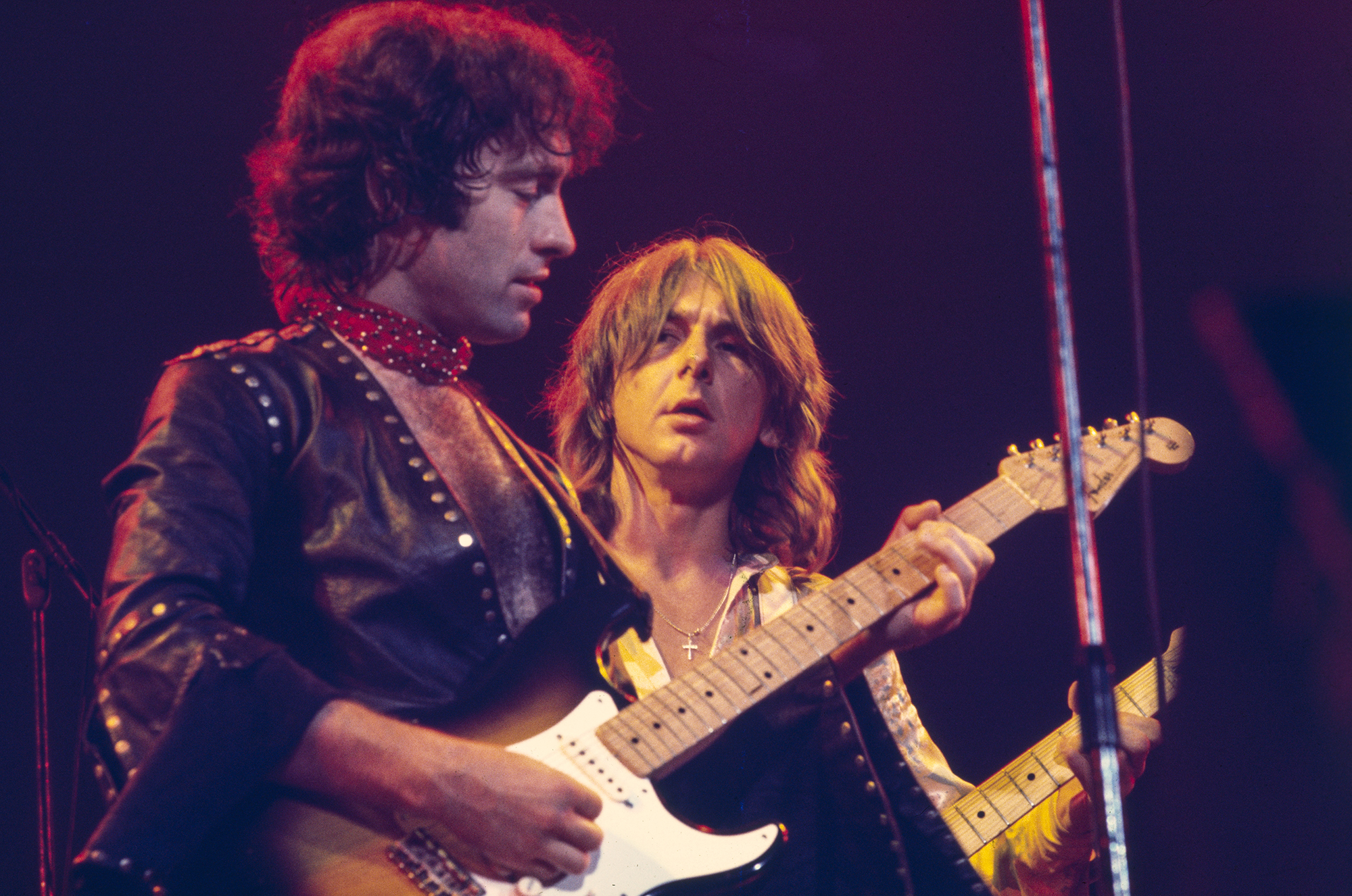
Ralphs picked up other guitars in America, including a Stratocaster and an Esquire. “The Stratocaster was about a ’58, a horrible ice-blue. It belonged to some guy in Cleveland, a country-and-western singer. I bought the guitar because it had a lovely maple neck.
“As soon as I got to England I had it refinished to a light brown. I gave it to Paul Rodgers because he was into Strats and had one stolen. He ended up using it for most of the early pictures you see of Bad Company.
“The Esquire was about $100; I bought it in a pawnshop in the downtown area of L.A. It’s like a ’52. Somebody had put a Gibson humbucking pickup on it between the Fender pickup and the neck, but it was such a funky old guitar I had to get it. It’s always been good and reliable. It reminded me of my Telecaster from years ago, so I hung onto it. I was already starting a collection without knowing it.
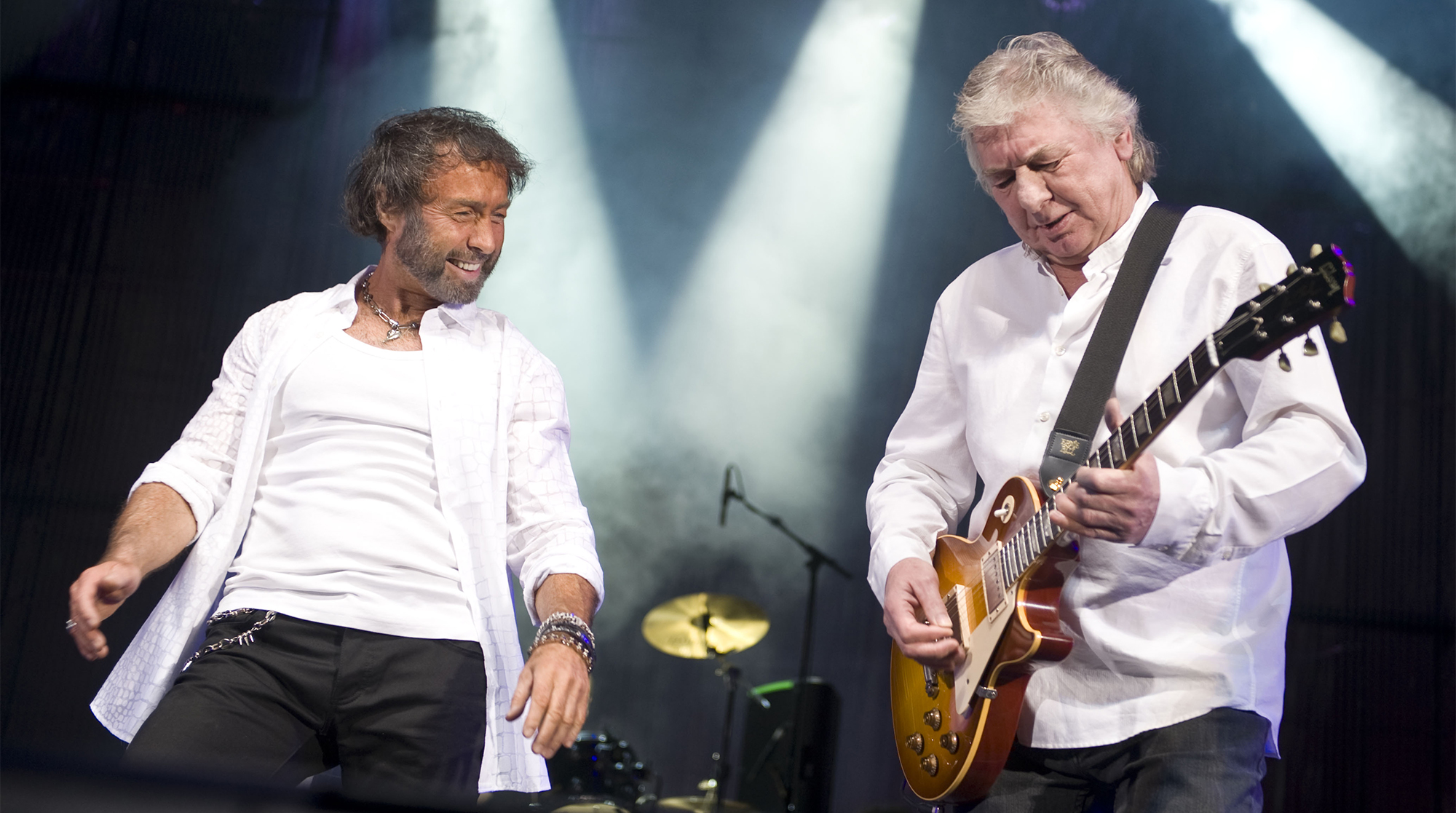
At the time of his interview, Ralphs was enjoying a large collection of axes. Among his favorites were a ’58 Flying V, '58 and ’59 Les Paul Standards, a blond ’59 ES-335 and a Firebird. Best of all, he could afford to keep them when he saw something else he liked.
"The main thing is I don’t have to sell a guitar now if I want to buy another one," he said with a laugh. "And that’s quite a thing from an old musician that’s always struggled. I always thought, Well, one day I won’t have to do this.
"And luckily, it’s like that now. I’ve got a nice collection of guitars; I’ve got some nice friends, a nice house in England. So I’m pretty happy."
Jas Obrecht was a staff editor for Guitar Player, 1978-1998. The author of several books, he runs the Talking Guitar YouTube channel and online magazine at jasobrecht.substack.com.
- Christopher ScapellitiGuitarPlayer.com editor-in-chief
